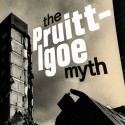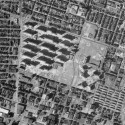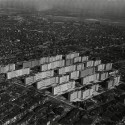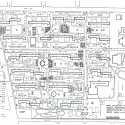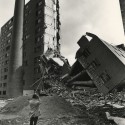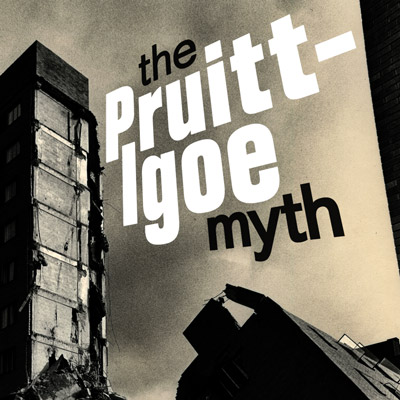تجربه عبرت آموز پروئیت ایگو در عصر مدرن. آیا مسکن مهر و روند اجرای آن سرنوشتی مشابه پروئیت ایگو خواهد داشت!؟ یا رویه ها تغییر خواهند کرد...
© The Pruitt-Igoe Myth
At a screening of
The Pruitt-Igoe Myth: An Urban History in New York City, a man in front of me wondered aloud "Do you think there are more urban planners, or St. Louis people here?" The film's crowd drew heavily from both and also attracted people with interests in social housing, modernism, racial tensions, architecture, and documentary films. Prior to the screening, the crowd was easily divided into two groups: those with an interest in Pruitt-Igoe as a case study, and those with a personal connection to St. Louis city's triumphs and struggles. By the end of the show, The Pruitt-Igoe Myth left every viewer knowledgable about the city's past, as well as invested in St. Louis' future. More after the break.

© The Pruitt-Igoe Myth
This film, directed by independent filmmaker Chad Freidrichs, revolves around the Pruitt-Igoe social housing development in St. Louis, Missouri. Most urban planners and St. Louis residents think of Pruitt-Igoe as, well, a failure. Freidrichs challenges this categorization and delves deeper into the histories of St. Louis and Pruitt-Igoe to explain the layered reasons for why it ended the way it did.

© The Pruitt-Igoe Myth
Pruitt-Igoe is not only understood as a failure by some, but images of its demolition often serve as an icon for failed modernism of the 1950s. In The Pruitt-Igoe Myth Freidrichs disproves this as a shallow theory and uses compelling personal narratives and historical accounts to show the good, the bad, and the ugly of the short lived social housing complex. The film shows that blame on a singular fault, whether it be blame on the residents or the modern design, is both unfair and far too narrow-minded to be the true cause of its short life span.

© The Pruitt-Igoe Myth
Pruitt-Igoe was built in 1954 as a solution to overcrowding in downtown St. Louis, which hit its population peak of around 850,000 people in 1950. Modernist architect Minoru Yamasaki designed 33 buildings of eleven stories on the 57 acre lot in north St. Louis. Yamasaki's design for the complex included green spaces, paths, and playgrounds weaving through the buildings, a drastic change for the new residents who were coming from the slums within the city. The Pruitt-Igoe buildings also included shared gallery spaces with large windows, community rooms, skip-stop elevators, and were fitted with brand new furnishings for the excited first residents.

© The Pruitt-Igoe Myth
The film shows an honest picture of Pruitt-Igoe's promising beginning, through to its demolition 20 years later. Most compelling are the varying personal memories shared by former residents of Pruitt-Igoe that alone make the film worth seeing. They suggest a complicated reality of elation and fear while living in the social housing complex. Along with these first person accounts, Freidrichs presents the full story of urban decline, white flight, lack of funding, stalled upkeep, and unlivable conditions, which finally led to Pruitt-Igoe's demolition.

© The Pruitt-Igoe Myth
The film's focus is on a full history of Pruitt-Igoe and St. Louis city during that time, but Freidrichs does not ignore the current state of north St. Louis in his dialogue. The opening images of the now vacant and overgrown lot are a reminder that Pruitt-Igoe is still strong in St. Louis' memory.

© The Pruitt-Igoe Myth
The enormous piece of land has sat empty for 30 years now in an area of St. Louis that struggles with population loss and crime, but is hopeful for redevelopment. Freidrichs says that the entire lot was purchased for just 1 million dollars this past year, and that the new owners are hopeful in making use of it. Until then, it stands as a graveyard for Pruitt-Igoe, a fenced off wasteland that's as misunderstood as the buildings that once stood there. Hopefully, with the help of Freidrichs' film, Pruitt-Igoe's reputation and the land it once stood on can both be restored.
Director:
Chad Freidrichs
Project Year: 2011
Location: St. Louis, Missouri, USA
Photographs:
The Pruitt-Igoe Myth